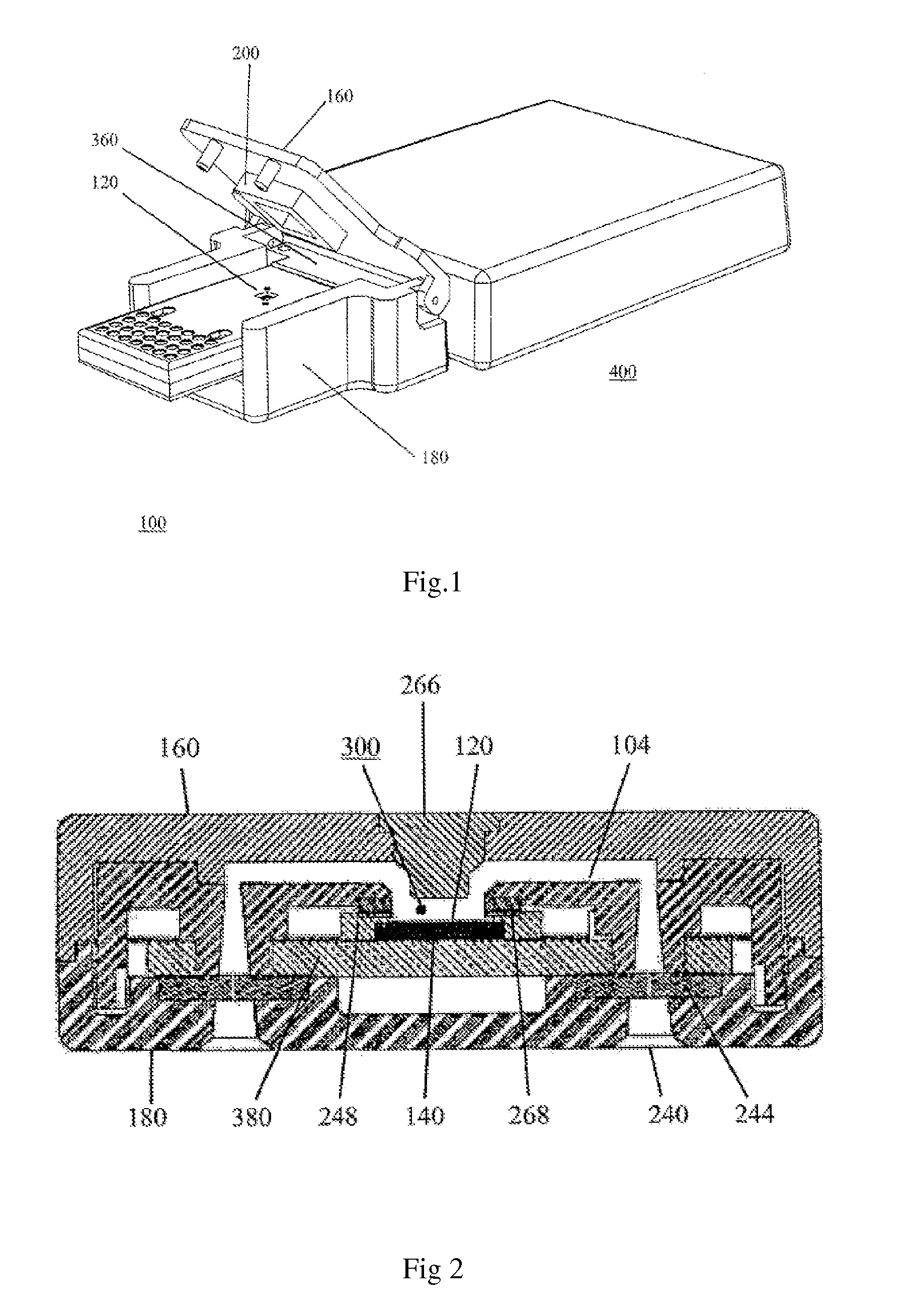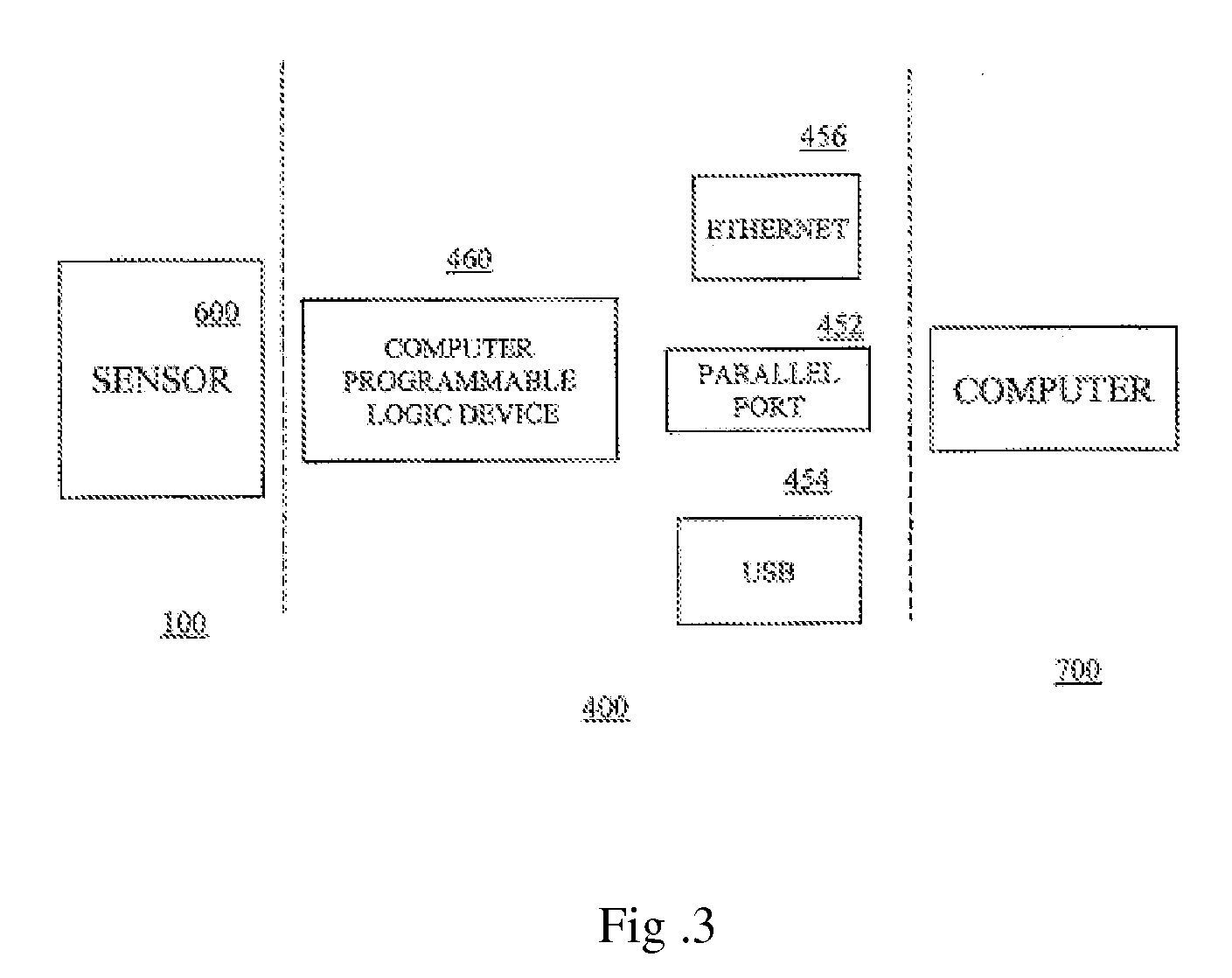Molecule Detecting System
a detection system and molecule technology, applied in the field of molecule detection system, can solve the problems of low signal, low signal-to-noise ratio, poor detection of analytes,
- Summary
- Abstract
- Description
- Claims
- Application Information
AI Technical Summary
Problems solved by technology
Method used
Image
Examples
example 1
[0112]Linear polysaccharide dextran (Sigma) was dissolved in deionized water to a final concentration of 1% and then autoclaved. An aliquot of 0.40 ml dextran solution was oxidized with 44 microliter of 0.5 M sodium periodate overnight in the dark at room temperature on a rocking platform. The oxidized dextran was then cleaned by precipitation twice with 0.3 M NaOAC and 2×Vol of EtOH. The pellet was air-dried and redissolved in 0.4 ml of 5 mM NaP04 buffer, pH 7.2.
[0113]One microliter of the oxidized dextran was added to 7 microliters of 10 mM NaCO3 (pH 9.0) and 2 microliters oligonucleotides (2 uM solution in H20) in an Eppendorff tube. The oligonucleotides varied in length from 25 to 45 mer, with a primary amine introduced at either the 3′ or 5′ end during synthesis. The reaction was carried out overnight in a 37° C. water bath. NaBH4 was added to the tube and the mixture was incubated further for 30 minutes at room temperature, then precipitated with 0.3 M NaOAc and 2×Vol of EtOH....
example 2
[0114]High-molecular-weight branched polysaccharides, glycogen (Sigma) and amylopectin (Sigma), were used to couple amine-derivatized oligonucleotides.
Diol groups of these polymers were converted to aldehyde groups by oxidation with NaI04. Sodium periodate was added to 0.4 ml of 1% polysaccharide solution (in H20) to a final concentration of 25 mM for glycogen, and 20 mM for amylopectin, respectively. Oxidation was continued in dark overnight at room temperature on a rocking platform. The oxidized polysaccharide was then precipitated twice with 0.3 M NaOAc and 2×Vol of EtOH to remove the excess NaI04. After air-drying, the pellets were dissolved in 0.4 ml of 5 mM NaP04 buffer (pH 7.2). Coupling of amine-derivatized oligonucleotide and gel-analysis of the coupled products were carried out as described in Example 1 for dextran.
example 3
[0115]The mesh probe of Example 2 is prepared having, on average, about 1000 oligonucleotide molecules coupled to each glycogen molecule at a coupling density of one oligonucleotide per 10 glucose monomers.
PUM
| Property | Measurement | Unit |
|---|---|---|
| temperature | aaaaa | aaaaa |
| pH | aaaaa | aaaaa |
| pH | aaaaa | aaaaa |
Abstract
Description
Claims
Application Information
 Login to View More
Login to View More - R&D
- Intellectual Property
- Life Sciences
- Materials
- Tech Scout
- Unparalleled Data Quality
- Higher Quality Content
- 60% Fewer Hallucinations
Browse by: Latest US Patents, China's latest patents, Technical Efficacy Thesaurus, Application Domain, Technology Topic, Popular Technical Reports.
© 2025 PatSnap. All rights reserved.Legal|Privacy policy|Modern Slavery Act Transparency Statement|Sitemap|About US| Contact US: help@patsnap.com



